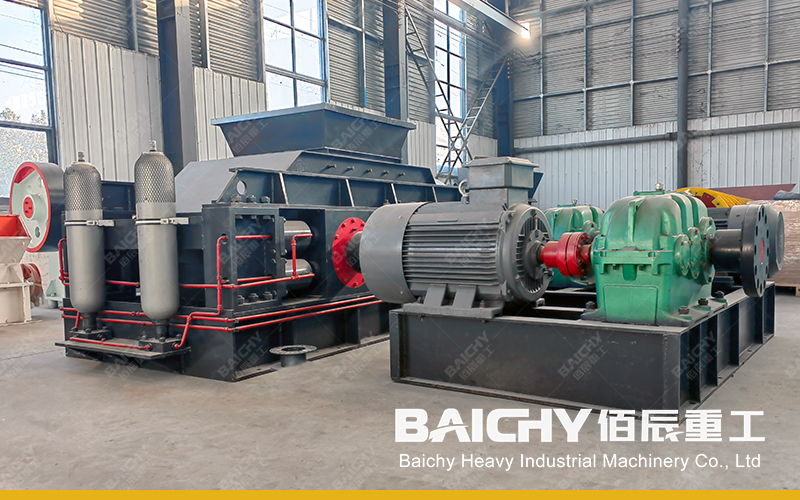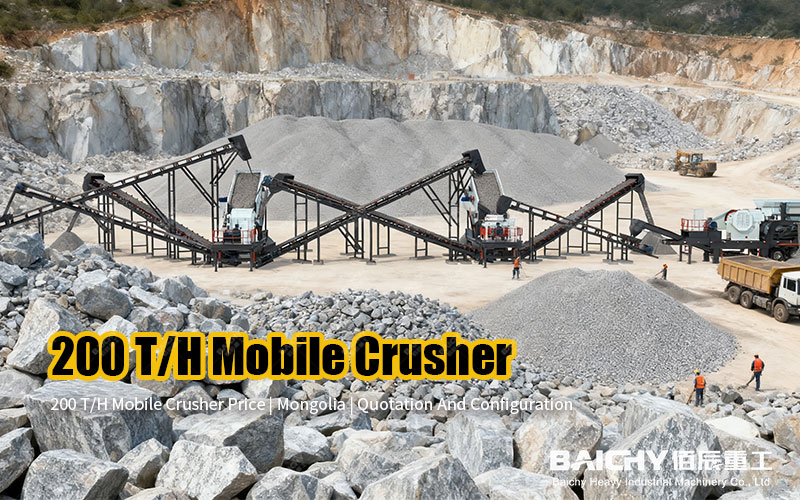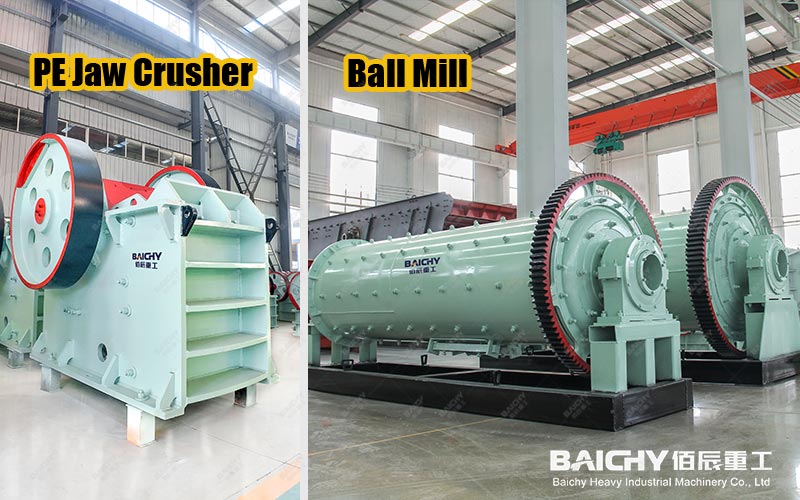
In industries such as mining, building materials, and chemicals, material crushing is the first critical step in the production process. Among various crushing equipment, the double-roll crusher, with its unique advantages such as simple structure, low over-crushing rate, and uniform product particle size, has always occupied an irreplaceable and important position. This article will take you through a deeper understanding of how a double-roll crusher works, its core advantages, and applicable scenarios.
I. What is a Double-Roll Crusher?
A double-roll crusher, as the name suggests, is a device that uses two counter-rotating rollers as its core crushing components. The minimum gap between the two rollers is called the "discharge port," and by adjusting this gap, the discharge particle size of the crushed material can be controlled. When the material enters between the two rollers from above, it is subjected to compression and grinding, thus achieving crushing.
It's like a powerful "stone mill," ideal for processing materials with medium to low hardness.
II. Core Working Principle: "Biting and Extrusion," Simple and Efficient
The working principle of a double-roll crusher is very intuitive and can be summarized as "continuous extrusion crushing":
1. Feeding: The material to be crushed falls evenly between the two rollers through a feeding device.
2. Biting and Extrusion: Driven by a motor and transmission system (such as pulleys and reducers), the two rollers rotate in opposite directions. The material is pulled into the continuously narrowing crushing chamber under the action of friction.
3. Crushing: When the material passes through the narrowest gap between the two rollers (discharge port), it is crushed by a huge extrusion force.
4. Discharge: The crushed material is discharged from the bottom of the equipment under the action of gravity, completing the entire crushing process.
A Key Design Feature: One of the rollers' bearing seats is usually mounted on a sliding base and supported by a powerful spring or hydraulic system. When encountering uncrushable foreign objects (such as iron blocks), the roller can move backward under pressure, increasing the discharge port and expelling the foreign object, thus effectively protecting the core components of the machine from damage. This "over-iron protection" device is a crucial guarantee for the safe and reliable operation of the double-roll crusher.
III. Key Advantages of the Double-Roll Crusher
Why has the double-roll crusher remained a mainstream piece of equipment for over a century? It stems from the following major advantages:
1. Compact structure and easy maintenance: Compared to jaw crushers or cone crushers, the double-roll crusher has a simpler structure, occupies less space, and is very convenient to operate and maintain, resulting in lower costs.
2. Low over-crushing rate and uniform product particle size: Utilizing extrusion crushing, it produces less powdery material, with the product primarily consisting of cubic particles of uniform size, making it particularly suitable for applications requiring control over fine powder content.
3. High adjustability and flexible particle size control: The discharge particle size can be easily adjusted by simply changing the gap between the two rollers to meet different production needs.
4. Suitable for sticky and wet materials: For sticky materials containing a certain amount of moisture, the double-roll crusher offers better throughput compared to some other easily clogged crushers.
5. Low Investment and Operating Costs: Initial purchase costs and subsequent energy and maintenance costs are relatively low, resulting in high cost-effectiveness.
IV. Main Application Areas
Double roll crushers are not suitable for all materials. They excel in the following areas:
• Mining Industry: Used for medium to fine crushing of coal, limestone, marl, sintered ore, granite, and other medium-to-low hardness ores and rocks.
• Building Materials Industry: Crushing raw materials such as cement clinker, clay, and shale.
• Chemical Industry: Processing fertilizer and glass raw materials.
• Ceramics Industry: Preparing ceramic blanks where uniform particle size and minimal powder are required.
Applicable Material Hardness: Generally recommended for materials with a compressive strength less than 250 MPa and of medium hardness or lower.
V. Selection and Usage Recommendations
When selecting and using a double roll crusher, please note the following:
• "Tailor the Solution": Clearly define the characteristics of the material you are processing (hardness, moisture content, viscosity, feed/discharge particle size) to ensure the double roll crusher is the optimal choice.
• Pay attention to roller skin material: Rollers are wear parts, and the wear resistance of their surface (roller skin) directly affects equipment lifespan and cost. Appropriate wear-resistant materials, such as high-manganese steel and alloy steel, should be selected based on the abrasiveness of the material.
• Uniform feeding is key: A feeder must be installed to ensure that material enters the crushing chamber uniformly and continuously, avoiding uneven roller surface wear and equipment overload.
The double-roll crusher has established a solid position in the crushing field with its classic design, reliable performance, and economical cost. It is not a panacea, but in its area of expertise, it is undoubtedly one of the most efficient and cost-effective choices. Whether building a new production line or upgrading existing equipment, the double-roll crusher deserves your serious consideration.











